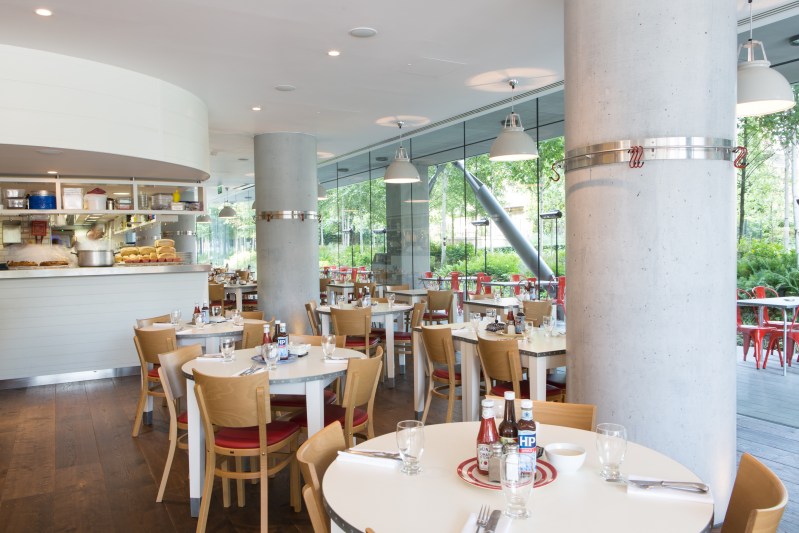Don’t get me wrong; I love ‘fancy food’ as much as the next urbanite, but I do not like spending half a month’s wages on a meal that leaves me hankering for a hamburger after dessert. This is where the Albion café’s second outpost really stands up.
The hip but ‘real’ eatery is located just shy of London’s Southbank, tucked behind the Tate Modern. The inaugural cafe was opened in 2009, on the happening Boundary Street strip in London’s East end. Since the doors first opened, the café has lured in the beautiful and the trendy, with its prestigious G&T’s and drool-worthy Sunday brunch menu. Now, the month-old Southbank branch looks set to follow in its big bro’s footsteps with its close proximity to the Tate and already beautiful and trendy patrons.
This feels like a good moment to mention that the eatery was opened and designed by Sir Terence Conran. Design buffs will feel his contemporary influence throughout the space upon entering; the white modular tables and stark wooden chairs are dotted around giant cement cylinders that feature Albion red butcher hooks for hanging jackets. The kitchen is gloriously open, which brings us neatly to the food…enormous stacked sandwiches behold a plethora of beautiful meats. If you want something typically English, go ham and mustard or roast beef and horseradish. If you’re suffering from a hangover, The Manual swears by the bacon/sausage/egg bap. Honestly.
The hungry and health-conscious will rejoice at the beetroot and goats cheese salad. Order a main portion and gauge yourself silly on generous chunks of creamy goats cheese and pickled cucumbers. Top it all off with a flat white, London’s caffeine fix of choice, and don’t forget to stop by the in-house deli to stock up on fresh herbs from Sir Terence’s garden…too much?







